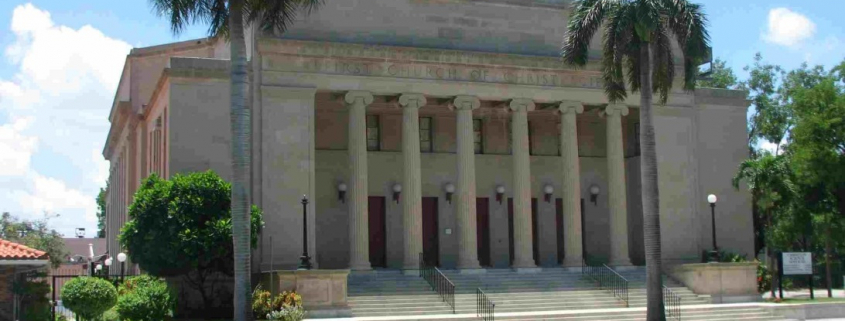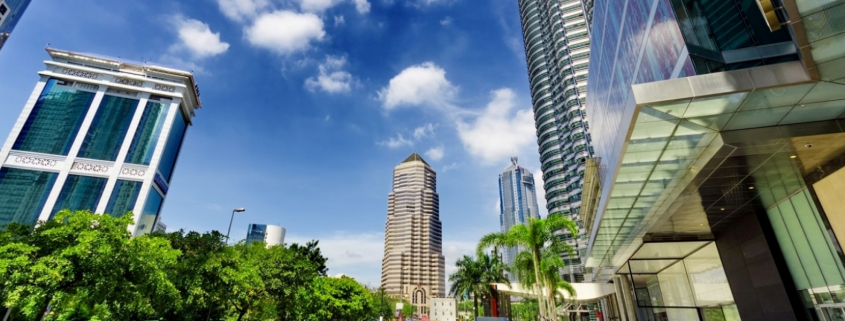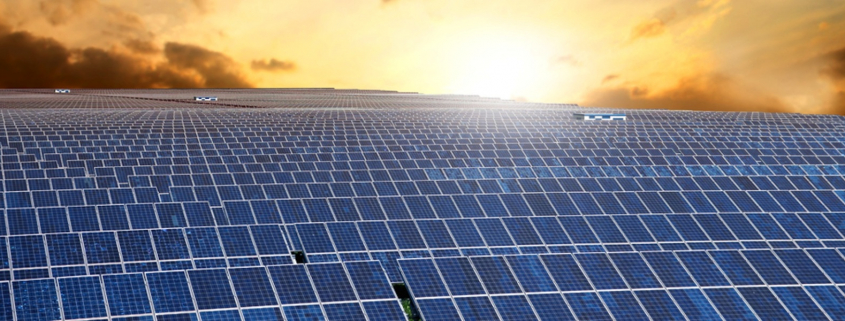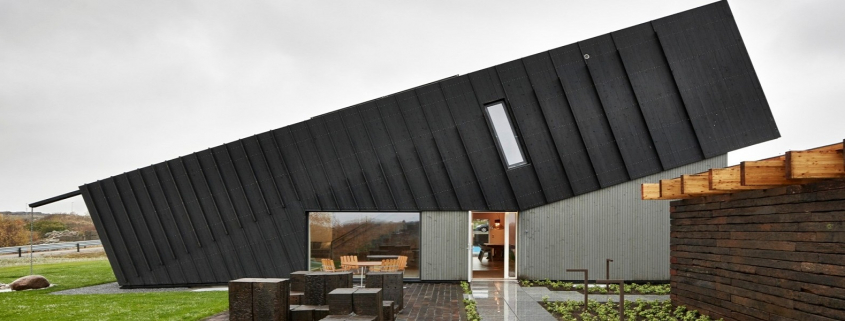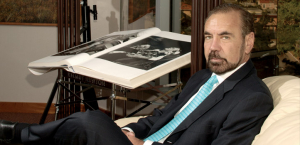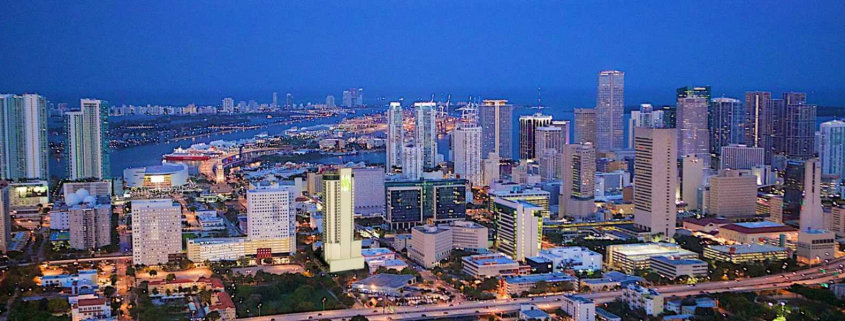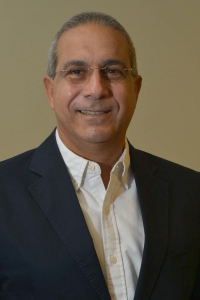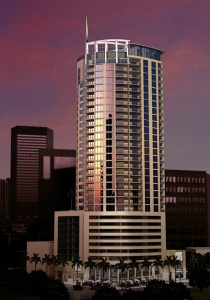Several green building trends emerged over the past 12 months that will impact commercial real estate in the United States in 2015, according to Doug Lawrence, founder and managing principal of 5 Stone Green Capital—Bainbridge, an institutional real estate company.
Lawrence serves on the investment and natural resources committees of the University of Connecticut Foundation and the advisory board of Rutgers Business School.
Here’s what he foresees for emerging trends in green real estate in the year ahead.
1. Aging baby boomers and Gen X, Y and Z will continue to move to cities, requiring more affordable housing—and expecting it to be green.
 U.S. cities are growing faster than the suburbs. Baby boomers will need urban housing that supports their health and community needs, but so will the younger generations flocking to live in urban environments. As a policy matter, this means cities will be pressured to create housing that serves a wider range of income and age demographics. Affordable housing is likely to be the target of municipal agendas throughout the country.
U.S. cities are growing faster than the suburbs. Baby boomers will need urban housing that supports their health and community needs, but so will the younger generations flocking to live in urban environments. As a policy matter, this means cities will be pressured to create housing that serves a wider range of income and age demographics. Affordable housing is likely to be the target of municipal agendas throughout the country.
Green multifamily really wins within this demand picture. The ability to reduce overall operating expenses through green technology, therefore also reducing occupancy costs for tenants, should improve residential affordability. Green multifamily properties featuring optimal health designs will become increasingly attractive. These would include better air filtration systems to reduce dust, pollen and airborne pathogens that may trigger asthma; more daylighting to improve natural vitamin D production; and antibacterial countertops and doorknobs.
Expect multifamily vacancy rates to continue to fall for affordable and seniors housing sub-sectors. Absorption rates will remain solid for new multifamily construction. The 18-to-34-year-olds seem psychologically predisposed to green housing and, thanks to tight lending standards and high student loan debt, this group will not be seeking single-family homes in the near future. Thus, multifamily demand looks pretty good for 2015, and green multifamily will be the likely winner with the younger generations.
2. The anti-climate-change voices will yell even louder.
 Some naysayers will stop arguing that there is no increase in carbon dioxide (CO2) in our atmosphere. Instead, they will argue that increasing CO2 is good for the global economy because CO2 is necessary to increase agriculture. Under this theory, more CO2 in the atmosphere would mean a golden age for crop production. Green real estate investors will continue to reduce their carbon footprint under the belief that doing so increases profitability and is good for the environment as well.
Some naysayers will stop arguing that there is no increase in carbon dioxide (CO2) in our atmosphere. Instead, they will argue that increasing CO2 is good for the global economy because CO2 is necessary to increase agriculture. Under this theory, more CO2 in the atmosphere would mean a golden age for crop production. Green real estate investors will continue to reduce their carbon footprint under the belief that doing so increases profitability and is good for the environment as well.
3. Renewable technology, particularly solar, will continue to fall in price and improve in efficiency.
 Solar panels that can convert up to 70 percent of the sun’s light spectrum into electricity (from gamma rays to X-rays) are already in beta testing. This could be a game-changer for real estate owners, especially in the multifamily and industrial sectors, as well as for those with properties in dense urban environments in high-cost electricity states.
Solar panels that can convert up to 70 percent of the sun’s light spectrum into electricity (from gamma rays to X-rays) are already in beta testing. This could be a game-changer for real estate owners, especially in the multifamily and industrial sectors, as well as for those with properties in dense urban environments in high-cost electricity states.
The cost of solar energy could fall below that of fossil fuel-generated electricity per kilowatt hour, even with the drop in oil and/or gas prices. As technology improves, real estate managers will explore new ways to provide energy to tenants and users at more efficient prices.
4. Urban resiliency and climate change will become topics for deeper discussion among policy-makers.
 Following rising average sea levels in a wide range of American cities—from Los Angeles to Galveston, Texas to New York and Boston—and more frequent and more damaging storms, cities are becoming very focused on hardening essential infrastructure.
Following rising average sea levels in a wide range of American cities—from Los Angeles to Galveston, Texas to New York and Boston—and more frequent and more damaging storms, cities are becoming very focused on hardening essential infrastructure.
The real estate industry may see new building codes that emphasize sustainability, as well as resiliency.
5. Utilities companies and smart developers will form partnerships for distributed generation.
 It’s getting harder and harder to build new power plants, yet we have more people for whom to provide electricity; meanwhile, business demand for electricity is increasing as the economy strengthens. U.S. power plants are not only aged, but also use incredibly large amounts of fresh water for cooling. Moreover, some experts predict that as much as 10 percent of coal-fired electricity-generating plants in the United States may be shut down over the next few years. More demand, coupled with fewer production resources, may spur real estate owners and power companies into an alliance.
It’s getting harder and harder to build new power plants, yet we have more people for whom to provide electricity; meanwhile, business demand for electricity is increasing as the economy strengthens. U.S. power plants are not only aged, but also use incredibly large amounts of fresh water for cooling. Moreover, some experts predict that as much as 10 percent of coal-fired electricity-generating plants in the United States may be shut down over the next few years. More demand, coupled with fewer production resources, may spur real estate owners and power companies into an alliance.
The concept of distributed generation, wherein solar-powered rooftops are used to create renewable energy that feeds the grid, will become more attractive. In this way, the utility company will gain a production source to feed growing demand without having to go through nightmarish public hearings to obtain the production increase. Meanwhile, the real estate owner may see a new revenue stream, or at least a reduction in energy consumption. All in all, partnerships between developers and utility companies may reduce overall operating expenses for garages, public areas, elevators and other electrical hot points.
6. The sharing economy will continue to grow.
 Sharing economy enterprises are thriving, particularly in urban markets. Think office sharing, or even Airbnb.com. These phenomena are no longer fads, and they are changing how we think about office space, hoteling and more.
Sharing economy enterprises are thriving, particularly in urban markets. Think office sharing, or even Airbnb.com. These phenomena are no longer fads, and they are changing how we think about office space, hoteling and more.
Many experts assume that the more we share, the less stress we will have on the environment, but it may still be too early to tell whether that’s true.
7. Food production will become more urban and commercial buildings’ rooftops will increase in value.
 It’s becoming less profitable to truck a tomato from California to New York and, due to the increasing demand for locally-grown produce, the term “farm-to-table” has become embedded in our vocabulary. The demand for food that is grown without pesticides, fungicides or other chemicals is increasing. We already see grocers like Whole Foods establishing hydroponic farms on their rooftops. Such production reduces transportation costs and improves produce freshness and variety. Other grocers, including Safeway, have gone green by deploying solar arrays and other renewable energy technologies on their stores’ rooftops in order to reduce peak-demand electricity charges. Large rooftops will therefore continue to find new value as non-traditional tenants begin to use them in new ways.
It’s becoming less profitable to truck a tomato from California to New York and, due to the increasing demand for locally-grown produce, the term “farm-to-table” has become embedded in our vocabulary. The demand for food that is grown without pesticides, fungicides or other chemicals is increasing. We already see grocers like Whole Foods establishing hydroponic farms on their rooftops. Such production reduces transportation costs and improves produce freshness and variety. Other grocers, including Safeway, have gone green by deploying solar arrays and other renewable energy technologies on their stores’ rooftops in order to reduce peak-demand electricity charges. Large rooftops will therefore continue to find new value as non-traditional tenants begin to use them in new ways.
8. Mortgage finance and insurance organizations will consider green standards.
 As the government-sponsored entities Freddie Mac and Fannie Mae continue reviewing and improving their standards for green buildings, other mainstream lenders and insurance companies will catch up with the trend. Insurance companies will see green buildings as a way to reduce risk. Lenders will potentially see lower volatility in net operating cash flows. As the capital markets go green, so will more building owners and investors.
As the government-sponsored entities Freddie Mac and Fannie Mae continue reviewing and improving their standards for green buildings, other mainstream lenders and insurance companies will catch up with the trend. Insurance companies will see green buildings as a way to reduce risk. Lenders will potentially see lower volatility in net operating cash flows. As the capital markets go green, so will more building owners and investors.
The Dow Jones Sustainability Index is proving that green business outperforms the non-green Dow Jones Industrials Index. Green building will mimic that outperformance and, as a result, gain momentum in 2015.
Source: NREI


